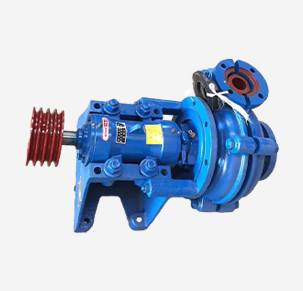English
- Afrikaans
- Albanian
- Amharic
- Arabic
- Armenian
- Azerbaijani
- Basque
- Belarusian
- Bengali
- Bosnian
- Bulgarian
- Catalan
- Cebuano
- Corsican
- Croatian
- Czech
- Danish
- Dutch
- English
- Esperanto
- Estonian
- Finnish
- French
- Frisian
- Galician
- Georgian
- German
- Greek
- Gujarati
- Haitian Creole
- hausa
- hawaiian
- Hebrew
- Hindi
- Miao
- Hungarian
- Icelandic
- igbo
- Indonesian
- irish
- Italian
- Japanese
- Javanese
- Kannada
- kazakh
- Khmer
- Rwandese
- Korean
- Kurdish
- Kyrgyz
- Lao
- Latin
- Latvian
- Lithuanian
- Luxembourgish
- Macedonian
- Malgashi
- Malay
- Malayalam
- Maltese
- Maori
- Marathi
- Mongolian
- Myanmar
- Nepali
- Norwegian
- Norwegian
- Occitan
- Pashto
- Persian
- Polish
- Portuguese
- Punjabi
- Romanian
- Russian
- Samoan
- Scottish Gaelic
- Serbian
- Sesotho
- Shona
- Sindhi
- Sinhala
- Slovak
- Slovenian
- Somali
- Spanish
- Sundanese
- Swahili
- Swedish
- Tagalog
- Tajik
- Tamil
- Tatar
- Telugu
- Thai
- Turkish
- Turkmen
- Ukrainian
- Urdu
- Uighur
- Uzbek
- Vietnamese
- Welsh
- Bantu
- Yiddish
- Yoruba
- Zulu
Telephone: +86 13120555503
Email: frank@cypump.com
Oct . 11, 2024 07:31 Back to list
interchangeable slurry pump
Understanding Interchangeable Slurry Pumps A Comprehensive Overview
Slurry pumps play a crucial role in various industries, particularly in mining, construction, and wastewater management. Among the different types of slurry pumps, interchangeable slurry pumps have attracted significant attention due to their versatility and efficiency. This article delves into the design, benefits, applications, and maintenance of interchangeable slurry pumps to provide a better understanding of this important equipment.
1. What is an Interchangeable Slurry Pump?
An interchangeable slurry pump is designed to handle a mixture of solid particles and liquids, commonly referred to as slurry. The primary feature that sets these pumps apart is their ability to interchange various components, such as impellers and wear plates, which allows for flexibility in operation and adaptability to different slurry types and conditions. This interchangeability ensures that operators can quickly change parts to suit varying operational needs without the need for a full pump replacement.
2. Design Features
Interchangeable slurry pumps are typically constructed from durable materials such as high-chrome alloys or rubber linings, which enhance their resistance to wear and corrosion. Key design elements include
- Impeller Design Impellers can be tailored to improve efficiency and performance for specific slurry compositions. An interchangeable design means that operators can switch impellers easily based on the viscosity and size of solid particles in the slurry.
- Wear Resistance Given the abrasive nature of slurry, interchangeable wear plates can extend the lifespan of the pump. Operators can replace these plates without overhauling the entire pump, thus reducing downtime.
- Sealing Mechanism Effective sealing is crucial to prevent leakage and maintain pump performance
. Interchangeable seals can accommodate different operational conditions and enhance the pump’s reliability.3. Benefits of Interchangeable Slurry Pumps
The use of interchangeable slurry pumps offers numerous advantages
- Flexibility Being able to switch components means that the pump can be adjusted to handle various slurries efficiently. This is particularly advantageous in industries where the type of slurry changes frequently.
interchangeable slurry pump

- Cost-Effectiveness Instead of purchasing entirely new pumps for different applications, operators can invest in interchangeable components, significantly reducing capital expenditure.
- Reduced Downtime When a part fails or needs adjustment, having interchangeable components allows for quicker repairs and maintenance, leading to minimized downtime and increased productivity.
- Optimized Efficiency Operators can select the most suitable impeller or wear plate for each application, optimizing the pump's efficiency and performance in handling different types of slurries.
4. Applications
Interchangeable slurry pumps are widely utilized across various sectors. In the mining industry, they are essential for transporting slurries containing minerals and ores. In construction, these pumps manage the removal of sediments and wastewater. Additionally, in wastewater treatment plants, they play a vital role in pumping thick sludge and other mixtures.
5. Maintenance Practices
To ensure longevity and optimum performance, regular maintenance of interchangeable slurry pumps is essential. Key maintenance practices include
- Regular Inspections Routine checks of impellers, wear plates, and seals for wear and damage can help identify issues before they become significant problems.
- Lubrication Maintaining proper lubrication will reduce wear and tear on moving parts.
- Cleaning Keeping the pump and its components clean of debris will help maintain efficiency and reduce the risk of blockages.
In conclusion, interchangeable slurry pumps are invaluable assets in many industrial applications. Their flexibility, cost-effectiveness, and ability to adapt to various slurry conditions make them a preferred choice for operators aiming to enhance productivity and reduce costs. By investing in these pumps and adhering to proper maintenance practices, industries can ensure efficient and reliable operation in their slurry handling processes.
-
ISG Series Vertical Pipeline Pump - Chi Yuan Pumps | Advanced Engineering&Industrial Efficiency
NewsJul.30,2025
-
ISG Series Pipeline Pump - Chi Yuan Pumps | High Efficiency, Energy Saving
NewsJul.30,2025
-
ISG Series Vertical Pipeline Pump-Chi Yuan Pumps|High Efficiency&Reliable Performance
NewsJul.29,2025
-
ISG Series Vertical Pipeline Pump|High Efficiency&Low Noise
NewsJul.29,2025
-
ISG Series Vertical Pipeline Pump - Chi Yuan Pumps Co., LTD.|High Efficiency, Energy Conservation, Low Noise
NewsJul.29,2025
-
ISG Series Vertical Pipeline Pump-Chi Yuan Pumps Co., LTD.|High Efficiency&Energy-Saving
NewsJul.29,2025










